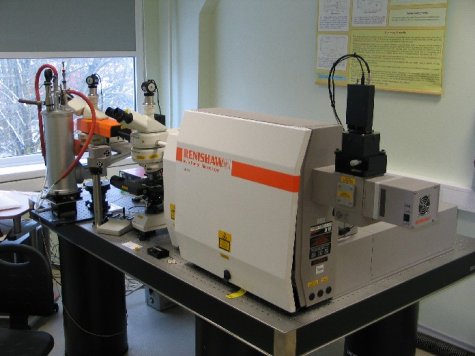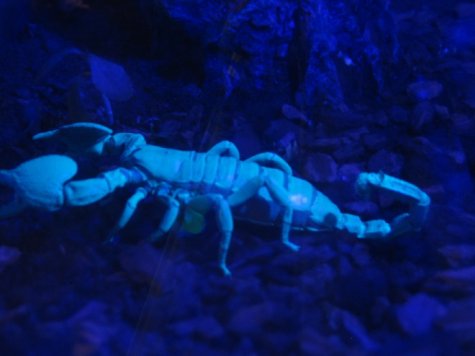Text and photos: Jaak Kikas, UT Institute of Physics
Translation: Liis from the Forum
Our world is a world of materials. Our history is a history of materials (we talk of the Stone Age, the Iron Age). The innumerable possible combinations of the atoms of the fewer than 100 chemical elements have given us an enormous and ever longer list of the most disparate materials. Some of them have been known since ancient times and still serve us today. Others are just out of the doors of the scientific laboratories. Some largely preserve their native character; others are changed past recognition, or maybe put together again atom by atom. We can manage what our materials can achieve. And what they cannot do also sets the limit to our powers. On the website “Materjalimaailm - Materials World”, compiled and set up by Unversity of Tartu (UT) physics professor Jaak Kikas, some hundred different materials are discussed, natural as well as man-made. The latter characterise man’s material culture from its very beginning to today’s high-tech society. Beginning this month they will also be presented in Loodusekalender. Enjoyable reading!
By UV light an intense blue fluorescence emerges from the chitin shell of many scorpion species. On the photo is an imperial scorpion, Pandinus imperator, from the Zoology museum of TÜ. The benefit for scorpion hunters is easy to understand, but what is the benefit for the scorpion?
Luminophores
The fact that certain bodies can radiate light, the spectrum of which in no way corresponds to their temperature (luminescence – “cold light”) may have first been noted by man on observing sea-fire or the flight of glow-worms, Lampyris noctiluca. Even if this phenomenon – bioluminescence – found practical use to some small extent, the “real” story of luminophores begins with the discovery of the so-called Bologna stone by the Italian boot-repairer and amateur chemist Vincenzo Cascariolo in the year 1603. An understanding of luminescence in today’s scientific terms was however reached much later, in the middle of the 19th century in the works of English physicist Sir George Gabriel Stokes. An early contribution to the studies of the luminescence phenomenon was made by a man from Estonia - Thomas Johann Seebeck who studied to physicist in Germany. Seebeck’s works are documented in the last chapter of Johann Wolfgang von Goethe’s “Theory of Colours” (“Zum Farbenlehre”, 1810) –in Estonian on the “Materjalimaailm” website. The beginnings of contemporary luminescence studies in Estonia are associated with the names of Fjodor Klement, Karl Rebane and Tšeslav Luštšik, whose work is continued by their students in the UT Institute of Physics. Luminescence is a many-facetted phenomenon. It can draw on the needed energy from various sources – light of different wavelengths (such as ultraviolet radiation), electric power, chemical energy, heat (thermoluminescence - which however should not be confused with heat radiation), or even from ultrasound. The materials (luminophores) that produce different kinds of luminescent radiation also differ. They may for instance be inorganic phosphors with a long (more than 10 hours) afterglow, or, on the other hand, so-called neon colours or the fluorophores used as “optical whiteners” in washing detergents whose radiation is extinguished within nanoseconds when the external exciting light disappears.

Monocrystalline and amorphous luminophores (synthesized and investigated in TÜ Institute of Physics, Laboratory of the physics of ionic crystals) by UV light.
The multiple uses of luminescence and luminophores today stretch from medicine and molecular biology (luminescent markers) to the display of information on cinescopes – TV serials such “Pealtnägija”(“Watcher”) and “Saladused” (“Secrets”) come to us (watchers) by way of the radiating luminophores in the TV screen. Luminescence helps archaeologists to determine the age of ancient ceramics, and criminologists find by way of the luminescence of luminole otherwise unnoticeable blood traces. Organisms (animals, plants) that have been made to glow bear witness of the power and possibilities of gene technology that has introduced genes in their genomes to make the organism synthesize various bioorganic fluorophores. In scintillators the luminescence helps to record high-energy particles by transforming their energy into visible light. An immediate benefit to taxpayers (although not yet to Estonian taxpayers) is provided by such devices in medical imaging (positron emission tomography, PET), but it may also be that with their help the enigma of the mysterious “dark matter” in Universe will once be solved. And maybe the most important aspect: the radiation of one of the cornerstones of today’s IT and communication technology – lasers – is first born as a luminescent radiation from where the optical resonator selects light with the needed wavelength. Surely the future will be even more “luminophorous” through the EU requirement to exchange ordinary light bulbs for the more energy-efficient luminophore lamps (low-energy bulbs).
More information and links to supplementary information sources can be found in the “Materjalimaailm” article “Luminofoorid”, “Luminophores”.

Raman fluorescence microscope used for luminescence research in the laser spectroscopy laboratory of TÜ Physics Institute.











